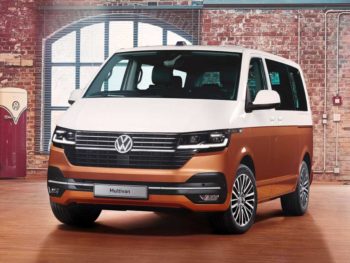Volkswagen is gearing up for an electric light commercial vehicle revolution, says Dan Gilkes.
 David Hanna, Volkswagen Commercial Vehicle’s head of fleet EV strategy, states that seven in 10 of the company’s LCV customers say that they are likely to buy an electric van next time around. This booming demand is changing VW’s approach in the UK. Where, initially the firm had intended to have 12 electric van dealers, 48 of the firm’s 71 Van Centres have now indicated that they want to be part of the electric network.
David Hanna, Volkswagen Commercial Vehicle’s head of fleet EV strategy, states that seven in 10 of the company’s LCV customers say that they are likely to buy an electric van next time around. This booming demand is changing VW’s approach in the UK. Where, initially the firm had intended to have 12 electric van dealers, 48 of the firm’s 71 Van Centres have now indicated that they want to be part of the electric network.
This group of dealers covers far more than just the London ULEZ or the growing number of CAZ areas. To help those customers that are considering a possible move to electric drive, Volkswagen has developed a fleet portfolio tool, that allows businesses to input operational data and assess whether an EV would work for them.
The e-Caddy will be the first electric VW van to arrive, in the longer e-Caddy Maxi form initially. Powered by a 38.8kWh battery, the van should deliver a 160-mile range, with a payload of 639kg. It will be followed by the e-Transporter, in 2020. This too will be offered in long wheelbase form first, with the e-Transporter available with a choice of 38.8kWh or 77.6kWh power packs. These will give customers the choice between a 134 mile range and 1,180kg of payload, or 250 miles of travel with a reduced 695kg load-carrying capability. Though already trialled by some UK customers in left-hand drive form, it looks like the e-Crafter won’t now be available in right-hand drive form until early 2021, due to increased demand from left-hand drive markets.
Volkswagen is not forgetting its traditional customer base in the push to electro-mobility. The company is opening additional authorised repair centres around the UK, now up to 26 outside of the 71 Van Centres. It has also taken on 50 apprentices within the network and is developing bespoke aftersales solutions.
Dealers have also been investing in the mobile service van fleet. There were 10 Crafter-based service vans at work in 2018, but that will rise to more than 30 by the end of this year. Some dealers will also opt for Transporter-based vans as well as those built on the new Crafter.
In an overall van market that was down slightly last year, Volkswagen continued to prosper. Its sales were up by 1.3% against 2017, enough for the company to maintain its number two position in the UK market under 5.0-tonnes.
Caddy sales were down, but that was in part due to not supplying the British Gas contract last year. Transporter sales on the other hand continued to grow, while Amarok also saw a sales increase. The new Crafter, which is now finally available in front, rear and all-wheel drive, also saw sales improvement.
According to director Carl zu Dohna, the focus for Volkswagen this year, is to prepare the network for the arrival of electric vans, to increase conversion sales and to further improve the firm’s aftersales service.
Volkswagen will also update the Transporter model this year, with a mild facelift and an increase in technology. The van adopts electromechanical power steering, to allow use of a wider range of electronic driver assistance systems. The most powerful 2.0TDi engine also gets a boost, up to 199hp, while electric drive will join the line-up next year.
There is a redesigned dash with a 10.25” display on people-carrying models. The driver can choose between different configurations, to suit their preferences. The vans will also incorporate a SIM card, to deliver a range of online services.
“The specification of standard features for the Transporter 6.1 has been significantly upgraded,” said Heinz-Jurgen Low, board member responsible for sales and marketing.
“Standard features include electric windows, central locking, electrically-adjustable and heated mirrors, new H7 headlights, interior lights with LED technology and a radio system with Bluetooth hands-free.”

